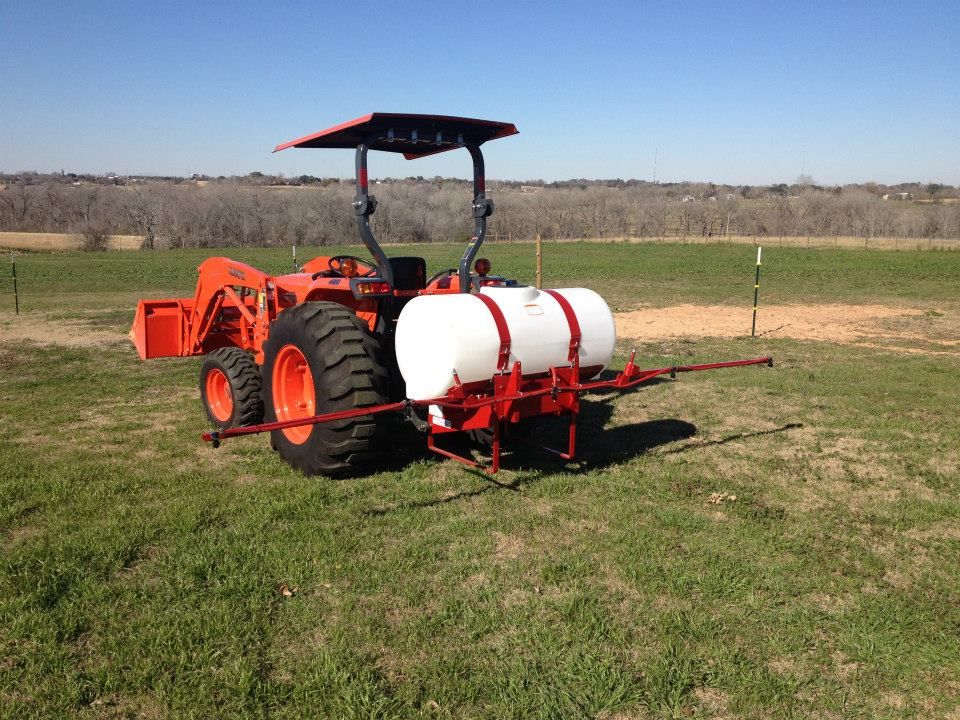A little bit more consideration of the entire process might help you make a decision.
My experience is that booms range between useless and PiA unless of the highest quality and used on a golf course-like terrain with no obstructions.
You'll find you can't get up much speed without those booms waggling up and down and front-to-back---and occasionally hanging up on something like a fence post or utility post or drag an embankment or something else. I was careful and spent a lot time repairing booms even if they hadn't hit anything. Consider also gate widths even when folded.
Consider instead a cluster-head sprayer. You might experience a little bit more drift (therefore more weather dependent when applying material) but the trade-offs are all positive. I get a 40-ft width with my cluster sprayer and do fencelines and ditches--and pastures--and don't have to worry about snagging anything (for ditches half the cluster is blanked off).
As for tank size, do your homework by checking with your (or Okla or Tx or Ark or Ks) state university ag extension service for the 'how to' set up and calibrate your intended rig for your specific intended herbicide.
Make yourself a chart for each different herbicide of your [[actual, tested]]ground speed, engine RPM / PTO speed, pump pressure, bypass pressure, mix ratio, whatever you think helpful.
Different materials will require different application rates which is the amount of material in one gallon distributed over some width of spray pattern, which is dependent on the specific spray tip and how fast you can drive your machine over the given terrain while maintaining your equipment without failure. Trust me, you can't manage booms at nearly the speed you think you can.
Restated, the 55-gals you mention may not be sufficient for a one-pass effort on your intended acreage, depending how you have to dilute the herbicide based on how your sprayer delivers a pattern based on how fast you can drive without breaking your booms (or riding a bucking bronco with all that weight on the 3-point).
RoundUp, 2, 4-D, MSMA, atrazine, whatever you use will be mixed differently and you'll need to have calibrated your rig by driving a pattern with plain water to determine a baseline. Refer to the state Univs mentioned above. It's not overly difficult, just follow their directions.
You may need an applicator's license in your area, if for no other reason than to placate bothersome neighbors if you kill their tomatoes or roses with drift.
You can save money by buying generic materials and adding your own defoamer and surfactant. Be sure to clean the rig with herbicide cleaner after each use (and winterize the pump and filter). And watch out for kids and pets and livestock.
Make sure the rig you buy has a bypass or mixing line or valve and a pressure regulator and pressure gauge and 'Y' filter. Until you get more experience I'd suggest staying away from plunger or gear-type pumps because they are positive displacement and can easily blow a line (drenching you and your landscape with herbicide) if something is misadjusted. Roller-type pumps are less expensive and more forgiving.
If your intended material has to mixed with diesel make certain your entire assembly can withstand hydrocarbon exposure.
Please don't be the person that just sloshes a jug of herbicide into a tank and drives around. It makes all agriculture look bad to the civilians and leads to restrictions when govt gets involved because of complaints. And I guarantee if you're in a high-density population area you will get complaints even if just because of the sight of you spraying or the smell, not to mention the well meaning but ignorant citizenry trying to save themselves from the imagined horrors of correctly-applied herbicides---while munching commercial French fries and unwashed apples.
Please post back your decision and experiences so we may all learn.


